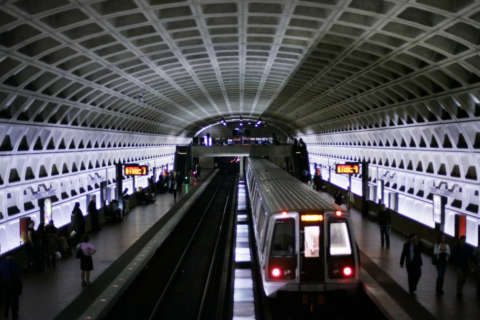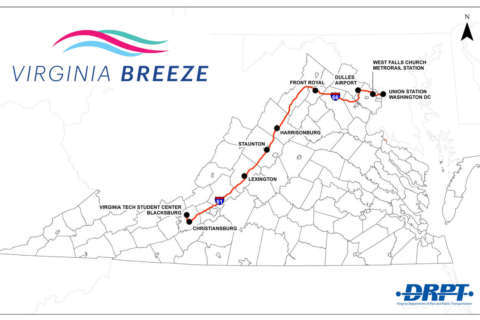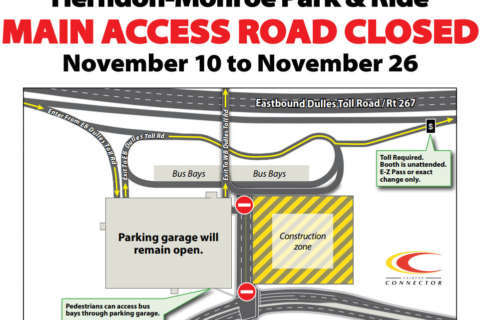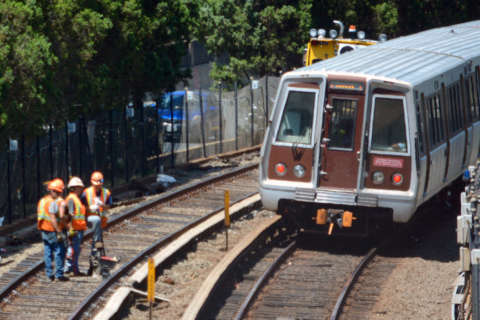WASHINGTON — Cuts to Metrorail rush-hour schedules this summer have led to an increase in riders arriving “on time,” according to Metro metrics.
Metro’s latest Vital Signs report card for July, August and September finds 88 percent of rail rider trips were on time during the three-month period. That means a rider waited up to the longest possible scheduled amount of time for a train at that time of day, got on, and walked out of a destination station in the time expected.
The increase in on-time performance is “thanks in large part to the implementation of a realistic schedule, the railcar ‘get well’ plan and the rail infrastructure preventive maintenance and capital programs,” documents prepared for Metro’s Board said. Based on an old measure of trains staying properly spaced, Metro scored about 90 percent.
The new schedule, which began June 25, cut rush-hour service to a scheduled every eight minutes on each line at the same time Metro raised fares. Still, about 10 percent of trips included delays due to railcar breakdowns, track problems, police activity or other issues.
The Blue, Orange and Silver lines had the lowest proportion of on-time trips, at 83 to 84 percent, while the Green Line had the highest, at 93 percent for the quarter. The Green Line number does not include trips that began or ended at the closed Branch Avenue Station during 24/7 track work in early August.
Riders across the system were most likely to be scored on time after 7 p.m. on weeknights (92 percent), when scheduled waits for trains balloon, and least likely to be on time on weekends, when track work disruptions are common (76 percent).
The June fare increases were most significant for bus riders and off-peak rail riders. Combined, the changes have contributed to keep ridership well below what Metro had hoped for.
Ridership particularly continues to drop outside of rush hour, when riders regularly face significant disruptions or extremely long waits. Rush-hour ridership has bounced back somewhat from last year’s significant decline during regular round-the-clock track work, but it remains far below the level of just a few years ago.
Average weekday rail ridership increased only one percent over the same period last year, despite the shift of major track work to focus mainly on weekends. Average weekend ridership, already down sharply, declined another one percent. Bus ridership was four percent below forecast, with an actual decline of eight percent on weekdays and six percent on weekends.
Metrorail and Metrobus carried a combined 74.7 million passenger trips in July, August and September, three percent below what Metro’s budget had forecast. There are still crowded times and lines across both the bus and rail system.
“The latest fare increase has injured bus ridership across lines and times of day, suppressing many other effects besides distinct service changes,” the Metro Board documents said.
The limited bus ridership comes despite improvements in bus on-time performance to the highest summer level since at least 2010 — 79 percent. Metro credits an updated schedule and increased use of technology to keep buses on schedule, even though buses broke down slightly more often than Metro hoped for.
Metro’s customer satisfaction surveys find 76 percent of bus riders and 74 percent of rail riders are satisfied with the system. For the rail system, that is a significant increase from 66 percent at this time last year, which Metro believes is due to fewer train offloads.
Metro also found that riders who have purchased a SelectPass, which allows for unlimited trips up to a set price, are using the system more and providing Metro with more money.
Other notes from the report
- Metro is averaging about one instance of single-tracking per day in the system, whether due to sick riders, track issues or other incidents.
- Downtown, in an effort to reduce fire risk and deal with other potential problems, Metro limited trains to 35 mph on nearly 23 miles of track starting in mid-August. Metro said that had only a minimal impact on riders, due to the short distances between stations downtown. An average of 10.4 miles of tracks were under safety-related speed restrictions on the first Wednesday of each month.
- MetroAccess on-time scores remained below target levels. Metro blames a significant number of new drivers, hired to alleviate a shortage, who are still facing a learning curve.
- As detailed in last month’s quarterly safety report, Metro rider injuries rose in July, August and September with a significant increase in injuries related to bus crashes.








